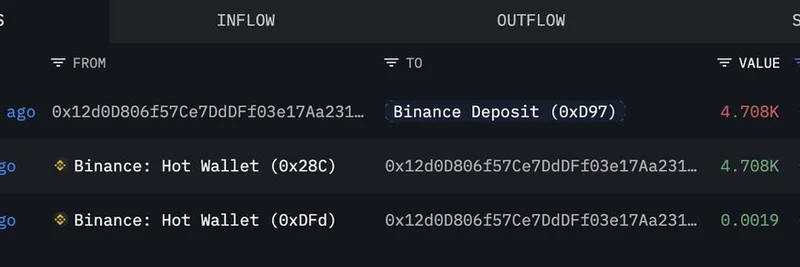In the fast-paced world of cryptocurrency, big players—often called "whales"—can make waves with their trades. Recently, blockchain tracker Lookonchain spotlighted one such move on X (formerly Twitter). A whale with the address starting 0x12d0 sold off 4,708 ETH, valued at about $18.8 million, just two months after buying it. The catch? They took a hefty $2.67 million loss on the deal.
You can check out the original post here for the full scoop. Lookonchain, known for sniffing out on-chain activities of smart money, linked to an explorer page on Arkham Intelligence where you can dive deeper into the address: 0x12d0D806f57Ce7DdDFf03e17Aa2318ACB0B5F5e8.
Why Would a Whale Sell at a Loss?
Selling at a loss might seem counterintuitive, especially for someone holding millions in crypto. But in the blockchain space, there are plenty of reasons this could happen. Maybe the whale needed liquidity for another investment, or perhaps they anticipated a further dip in ETH prices. Ethereum, the backbone of many decentralized apps and tokens, has been volatile lately, influenced by factors like regulatory news, network upgrades, or broader market sentiment.
Whales like this one often move funds between exchanges and wallets. From the transaction history shared, it looks like the ETH came from Binance hot wallets before landing in this address. Then, poof—sold off. This kind of activity isn't uncommon; it's part of the game where big holders rotate assets to manage risk or capitalize on opportunities.
Tying It Back to Meme Tokens
Now, you might be wondering: what does an ETH sell-off have to do with meme tokens? Well, Ethereum is the go-to platform for most meme coins. Think Dogecoin-inspired tokens or the latest viral sensations—they're often built on ETH's network or layer-2 solutions like Base or Solana competitors. When a whale dumps ETH, it can signal broader market caution, potentially leading to sell pressure on ETH-based assets, including memes.
Meme tokens thrive on hype and community buzz, but they're sensitive to ETH's price swings. If ETH drops, gas fees might fluctuate, or liquidity pools could dry up, making it tougher for smaller traders. On the flip side, this loss-taking could mean the whale is pivoting to something hotter—maybe a new meme project or altcoin season play. Keep an eye on on-chain data; tools like Arkham or Dune Analytics can help spot these shifts early.
Lessons for Blockchain Practitioners
If you're diving into crypto or building on blockchain, stories like this are gold. They remind us that even whales aren't immune to losses—patience and strategy matter. Always DYOR (do your own research) before jumping in. Track whale movements with services like Lookonchain or Whale Alert to gauge market mood.
In the end, this sell-off is a snapshot of crypto's wild ride. Whether it's a sign of more dumps ahead or just one player's exit, it underscores why staying informed is key. What's your take—bullish or bearish on ETH right now? Share in the comments below!



